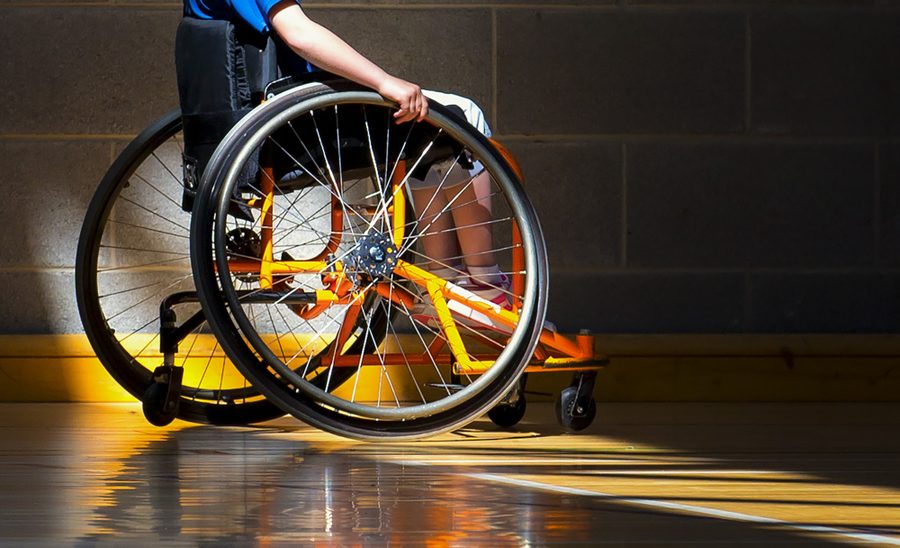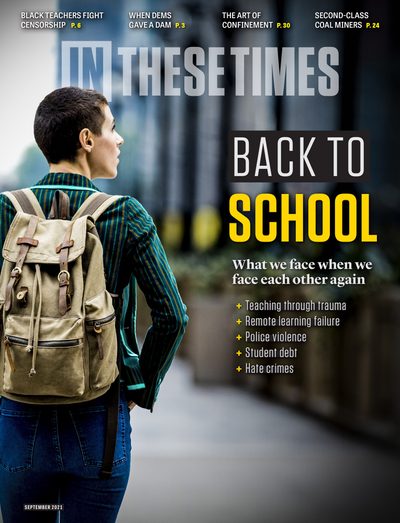School's Open. But What About the Year That I, And Other Disabled Students, Lost?
A 10-year-old reflects on remote learning challenges as we head into a new academic year.
Freyja Christian and Aimee Christian

This year, school was bad. Really bad. I’m scared of going into fourth grade. I don’t think I’m ready, and I’m not sure if I care.
I am 10. I have attention deficit hyperactivity disorder and a neurological disorder called pontocerebellar hypoplasia (PCH). It’s really rare.
My exact type is unknown, but it’s most likely type 2A. I can do a lot more things than most PCH kids can do, but I still need a lot of support.
When Covid closed schools for the last three months of second grade, Mom was so worried.
Before the pandemic, I used a walker most of the time with braces on my legs. But then school went remote and the rehab center closed, so I stopped getting physical therapy at both. My whole body got weaker. After six months of sitting at home and watching a lot of YouTube videos and not being able to leave the house, I needed my wheelchair all the time.
Last year, I couldn’t do a lot of remote learning on my own because Mom had to work and she couldn’t help me focus. This year, the district made school hybrid for elementary school, meaning most kids were in person in the morning and then on Zoom in the afternoon. The kids like me, “high-needs learners” as they call us, needed big changes so Zoom would be more than just backgrounds and filters (though that would’ve been kinda OK with me). We were in the building all day, every day, with our one-to-one paraprofessionals by our sides so that we’d have help accessing Zoom along with the rest of the curriculum.
But they made one big mistake.
Usually at my school, kids like me would rejoin general ed in the afternoon for lunch, music, art, social studies, science and Spanish. The afternoons were my favorite part because I am a social kid inspired by my neurotypical, non-disabled peers. But with the hybrid model, my typically developing peers were in school all morning while I was with my special ed class. Then, when it came time for me to integrate with my neurotypical classmates, they were back at home, which meant my interactions with the gen-ed kids were entirely on Zoom.
To make matters worse, my mom told me all year that it wasn’t safe for me to have playdates because my disability is neurological and we just couldn’t take chances with Covid. But that wasn’t fair. I know the gen-ed kids were sometimes Zooming from each other’s houses because I could see the same background, or they said stuff about pods or sleepovers. I hadn’t seen another kid my age socially in forever and I wanted to see them in person, too.
All of that made me so angry that I didn’t want to be in school at all. I started to hate it. I didn’t want to wear a mask. I didn’t want to read. I was bad at math. I wanted to go home.
We were all back in person in April. And that was nice and all but by then I was so tired and so behind that it was kind of like, whatever. Too late. And in May, Mom started talking about summer school and money that the state set aside for special summer programming to “bridge the gap” but I’m just like, I can’t even walk anymore and you want me to read and do math every day now? When I think about all of that, I want to go back to bed. It’s a lot.
Mom’s mad because the school didn’t offer us this funding, she had to fight for it. So she’s helping me decide. It’s four weeks of social and emotional skill building and occupational therapy. It probably won’t fix much, but Mom and I agreed that if I go to school on the first day of fourth grade without saying, “I hate school. I don’t want to go,” then it will be a success.
For me, anyway, that will be enough. For Mom? It’s a start, she says. She’s so mad that nobody listened to me all along.
My mom has a suggestion. She thinks that when dollar amounts are announced like this, they should be accompanied by a per-child budget, the way some states have a per-child budget for children with disabilities on Medicaid waivers. Fighting for resources to help close the gap should not be on the families.
Here’s my big suggestion for the future: Listen to the kids, even the ones who are too young to participate in their own individualized education plan meetings. Ask us what programming might reengage us. When I thought math workbooks were too boring, I told my teacher I wanted her to make math more fun. At first she threw up her hands, but then I said “use dolls,” and she figured out a way to make teddy bears go to the nail salon and do multiplication up to the 10 times table with their fingers and toes. That might sound silly, but it worked. It brought me back in.
Freyja Christian was diagnosed with pontocerebellar hypoplasia, a very rare and terminal neurological disorder, at 14 months. She is now 10.
Aimee Christian is Freyja’s mother, a disability activist and a freelance writer.





